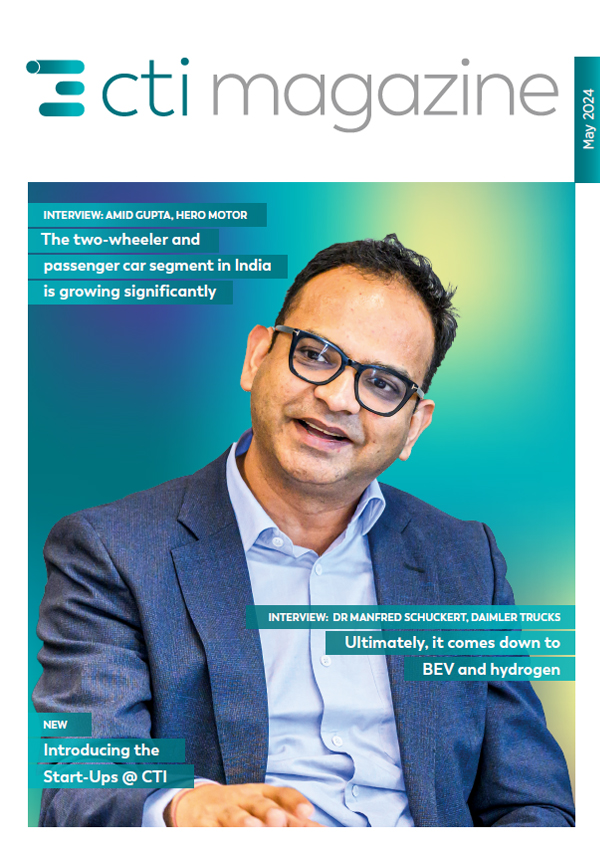Electric Mobility: What could be better than combining driving enjoyment with sustainability?
CTI Symposium 2016 – Interview with Jörg Grotendorst, Head of E-Mobility, ZF Friedrichshafen AG.
ZF Friedrichshafen AG is deeply realigning their business modell at the moment. With the acquisition of TRW, they’re shifting from a classical driveline and chassis technology manufacturer to a holistic solutions provider – not just for mechanical systems, but for electronic systems too. We talked with Jörg Grotendorst, Head of E-Mobility at ZF about the trend towards e-mobility.
CTI: For the audience, it was unusual to see a manager up on stage who is so passionate about the topic. It seems you’ve really committed to enhancing the topic with emotion. Has that concept worked out?
Grotendorst: Yes, I’m absolutely convinced that electric mobility is fun! You don’t have to sell boring eco-products. People don’t want to buy cars they’ll have to pay for in full before they can start saving. I really believe that life should be fun too. So if we can go one step further and combine fun and sustainability … what could be better?
CTI: You also took part in the podium discussion, together with up-and-coming young managers. When we saw the video clips asking young people what they think of automobiles, I was surprised at how many young people are still ‘car guys’ to a certain extent. Do you agree?
Grotendorst: Yes, absolutely. But I think that’s because the people on stage didn’t really represent society in general. We heard there were young fathers and mothers on stage, but also that most of them live in the suburbs. As I see it, you simply can’t compare our mobility expectations in Europe – particularly central Europe, and possibly in America too – with what mass mobility might mean for big cities and mega-cities in the next 15 years.
CTI: The CTI Symposium is celebrating its fifteenth anniversary. Looking back – which you obviously can, after attending so many events – even just a few years ago most people in the industry were saying electric mobility didn’t really stand a chance. This year, in 2016, they’re saying very different things. Are they just paying lip service, or is the industry really on the road to this new technological future?
Grotendorst: That surprised me too! I agree entirely. I notice the statements on electric mobility are much more upbeat than last year, so the wind is changing. What particularly surprised me was the TED survey asking how many people expected to be driving a hybrid, and how many a conventional automobile in ten years’ time.
Until now, we’d been hearing in discussions that by 2025 we might see 25% electrification, meaning 75% of automobiles would still have an ICE. But here in the room, it was a totally different picture. I think the numbers here were just 13% for conventional drives, and over 50% for hybrids. That means a total of just 65% with an ICE, which leaves 35% for all-electric vehicles. That figure is significantly higher than the ones we heard from most previous forecasts.
CTI: Last question: At your company ZF, what really prompted you to shift your energy to electric mobility, to the new mobility? Was it when OEMs started marketing the topic more positively, which they admittedly now do? Or did you, as a supplier, plot your course earlier on so that when the trend arrived, you’d be ready?
Grotendorst: Quite simply, we started internal discussions about transmission electrification relatively early on. But traditionally, our roots at ZF lie in lengthwise construction, meaning vehicles with a tunnel. And when you look 15 years ahead, to autonomous driving and more freedom for passengers in the passenger cell, you realize: that tunnel might not be there any more. So then you ask yourself what transmission solutions would we need so passengers could have more space … and the answer is always electric drives. I think the whole management team at ZF understood fairly well that we need to prepare for that.
